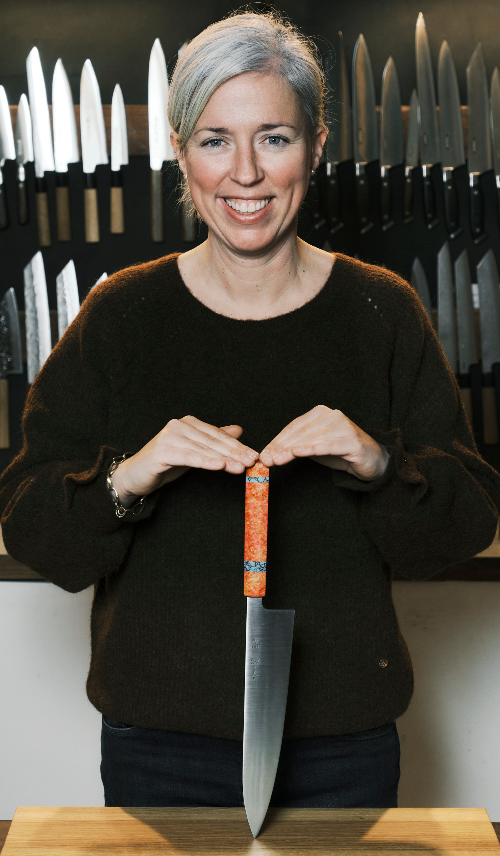About the Blacksmiths: Konosuke
Konosuke makes traditional Japanese knives for the professional kitchen. The company was started in 1932 by Kenjiro Kawamura, and is today run by his grandson Nobuyuki Kawamura (Standing on the far left in the picture below) and great-grandson Kosuke Kawamura (second from the left in the same picture). It was a rough start as the company was leveled during WWII in 1945, but their drive and pride in their craft meant they reopened in 1948.
The company is located in Sakai - the capital of knifesmiths - which is a suburb of Osaka. A kitchen knife from Konosuke goes through several skilled hands before it is finished and the steel as well as forging, sharpening and finishing are in a class of their own.
Konosuke typically forges in the classic steel types such as Aogami and Shirogami. Konosuke is, among other things, known for sculpting the Hamon line like mount Fuji on his honyakisme-forged knives.
At Konosuke's, the blacksmith hands over the knife blade to the sharpener, mr. Kadota, who sharpens the knives. The knives are then delivered to Konosuke's small workshop, where Nobuyuki Kawamura puts the handles on, as well as engraves and checks the finish.
We at Foodgear are very proud to sell the fantastic knives from Konosuke. We got to know the company Konosuke when we took over the Danish company Hocho, which had been importing knives from Konosuke for several years. When we were in Japan in the spring of 2014, we naturally visited the family in the workshop in Sakai.
See our selection of Konosuke knives here

 |
 |
 |
 |
 |
|



